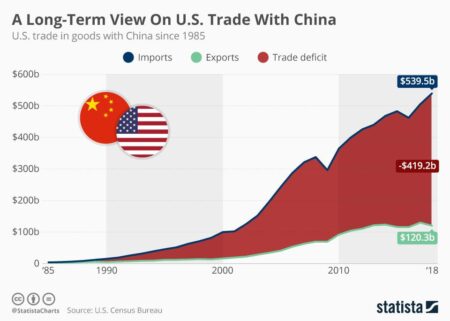Maryland soybean farmers are facing significant financial losses as tensions between the United States and China escalate in an ongoing trade war. Chinese tariffs on American agricultural products have led to a sharp decline in soybean exports, crippling the livelihoods of local growers who rely heavily on the Chinese market. Farmers from the region have expressed growing frustration, saying the trade dispute is “killing us” by cutting off a vital source of income and threatening the stability of their operations. This developing situation underscores the wider economic impact of international trade conflicts on American agriculture.
Impact of Trade War on Maryland Soybean Farmers and Local Economy
Maryland soybean farmers have been bearing the brunt of escalating tariffs as China significantly reduced its import volume-a move that has shattered longstanding trade relationships and disrupted local markets. For many growers, China was a vital export destination, representing a substantial portion of their annual sales. The sudden loss of this market has led to unsold stock, depressed prices, and shrinking profit margins. Farmers report facing increased pressure to find alternative buyers, often at lower prices, intensifying financial strain and uncertainty about the sustainability of their operations.
The ripple effects extend beyond the fields, weighing heavily on Maryland’s rural economy. Local businesses such as grain elevators, equipment suppliers, and transportation services are experiencing a downturn due to reduced farming revenues. Key economic impacts include:
- Decline in farm-related employment opportunities
- Reduced tax revenues for small agricultural communities
- Lower demand for ancillary goods and services
The below table highlights the comparative export data before and after the onset of the trade conflict:
| Year | Maryland Soybean Exports to China (million bushels) |
|---|---|
| 2017 | 12.5 |
| 2018 | 7.3 |
| 2019 | 1.2 |
Challenges Facing Farmers as Chinese Demand Plummets
Farmers in Maryland’s soybean belt have faced unprecedented setbacks as demand from China-a once-reliable export market-has drastically declined amid ongoing trade tensions. The fallout has left many producers grappling with surplus crops and plummeting prices. Loss of Chinese buyers has triggered a ripple effect across the agricultural community, forcing farmers to reconsider planting decisions and budget forecasts for upcoming seasons. Many speak of financial strain and uncertainty, highlighting challenges such as increased storage costs and difficulty finding alternative markets.
The impact extends beyond economics; it has tested the resilience of farming families who rely heavily on soybean revenues. Key challenges include:
- Market instability: Sharp fluctuations in commodity prices have made planning difficult.
- Reduced bargaining power: Limited buyers mean farmers often accept lower offers.
- Logistical hurdles: Moving excess inventory to new buyers involves added expenses.
| Challenge | Impact on Farmers |
|---|---|
| Price Collapse | Revenue drops by 30-40% |
| Storage Costs | Increase by 15% annually |
| Market Reach | Limited to local buyers |
Strategies for Maryland Growers to Diversify Markets and Mitigate Losses
Maryland soybean farmers facing dwindling demand from China are increasingly turning to alternative markets both domestically and internationally to offset significant revenue losses. By expanding trade relationships within emerging economies in Southeast Asia, the European Union, and Latin America, growers aim to reduce reliance on any single export destination. Additionally, local initiatives encouraging the development of value-added products such as soybean oil, meal, and livestock feed are gaining traction, offering farmers multiple revenue streams beyond bulk commodity sales. Industry groups also emphasize the importance of tapping into Maryland’s growing demand for organic and non-GMO soybeans, seeking premium pricing in niche markets.
Farmers and cooperatives are investing in innovative marketing strategies, including direct-to-consumer sales and partnerships with regional food processors, to stabilize income during this turbulent period. State-supported programs provide resources for exploring crop diversification, encouraging the integration of other resilient crops like corn, wheat, and specialty grains to reduce risk. The following table summarizes some key strategic options Maryland soybean producers are pursuing to mitigate losses and diversify their market presence:
| Strategy | Description | Potential Benefit |
|---|---|---|
| Alternative Export Markets | Target emerging economies beyond China | Reduced dependency on single buyer |
| Value-Added Products | Process soy into oil, meal, and feed locally | Increased revenue per bushel |
| Crop Diversification | Grow corn, wheat, or specialty grains | Risk mitigation and income stability |
| Direct Marketing | Sell directly to consumers and processors | Higher profit margins |
| Organic/Niche Market Focus | Develop organic / non-GMO soybean production | Premium pricing opportunities |
Future Outlook
As the trade tensions between the United States and China persist, Maryland soybean farmers find themselves caught in the crossfire, facing significant losses and uncertainty about the future of their livelihoods. The impact of the ongoing dispute underscores the broader consequences of international trade policies on local communities and highlights the urgent need for resolution to restore stability to the agricultural sector.




